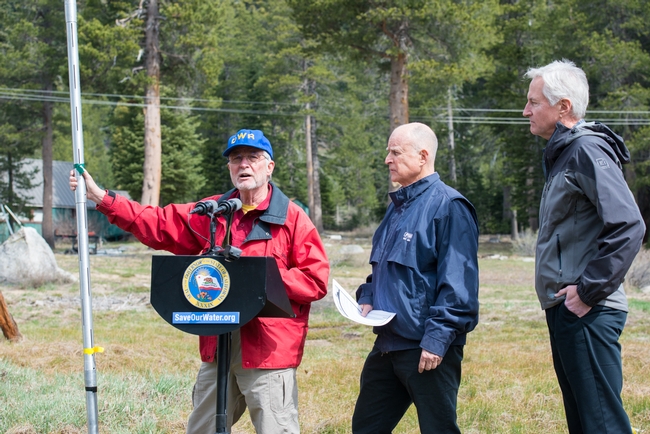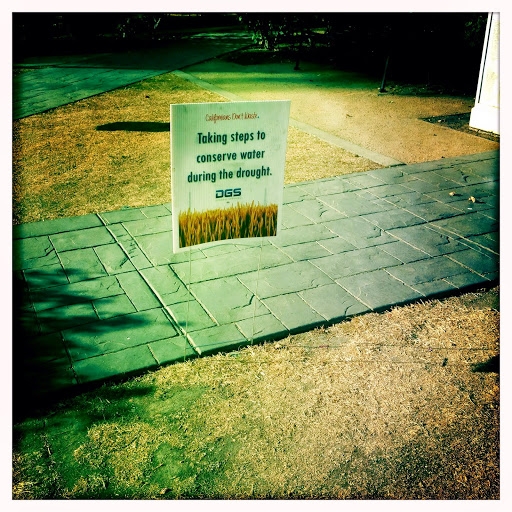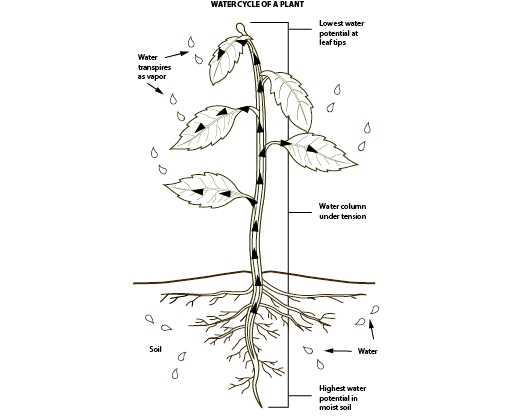Tips for saving water in your landscape during drought
Standing in the usually snow-packed Sierra Nevada Mountains, Gov. Jerry Brown called for a mandatory reduction of water use across California the beginning of this month. For the first time in the state a required water conservation action has been called, shedding light on the severity of California's drought conditions.
At the direction of Gov. Brown the State Water Resources Control Board will require local water districts to impose a 25 percent water restrictions on all resident's water use.
These new mandatory restrictions have left many home gardeners to wonder what this means for their home landscape.
Reducing Water Use in the Garden
According to The California Garden Web, an informational website about gardening hosted by the UC Master Gardener Program, water use in the home landscape can often be easily reduced by 20 to 40 percent because overwatering is a common mistake by homeowners. Slowly start to reduce water supplied to plants over the course of a few weeks, giving the plants time to adapt to the change.
It is important for residents to remember to not introduce new plants to your landscape during a severe drought. Even California native plants aren't drought-tolerant until they become well established. When water restrictions are lifted and new plants can be introduced, select drought-tolerant varieties appropriate for your climate zone.
Planting in the fall as opposed to the spring allows plants to become established by winter rains. Residents should prioritize water use in their landscape, saving established trees and large shrubs first because they are typically more expensive to replace and require years to mature.
UC Master Gardener Program Offers Help
The UC Master Gardener Program has volunteers across the state, trained by University of California Cooperative Extension (UCCE), available to answer the public's questions about how to save established trees, plants and reduce water use in their yards.
Many of the program's 50 county-based locations offer free to the public hotline services, home irrigation analysis and workshops for the public that are aimed at helping California's residents reduce their water use. Contact a local UC Master Gardener Program for more water saving information and resources.
Trusted Resources
The new second edition of the California Master Gardener Handbook from the UC Division of Agriculture and Natural Resources (UC ANR) is a great resource for drought tips and home landscape water conservation methods. With an extensive chapter dedicated to water conservation methods, best practices for irrigation, plant selection, and tips for protecting water quality in urban landscapes.
Another great option is to use the irrigation worksheet for homeowners that was recently developed by Dr. Loren Oki, CE Specialist, Landscape Horticulture with UC ANR and UC Davis. The worksheet is designed to calculate an irrigation schedule for a landscape zone for one calendar year.
Comments:
California is home to more biological diversity than any other state in our country. Therefore, to sustain pollinators, other insects, birds and natural ecosystems, I believe it is essential that we replace water-thirsty lawns with the toughest drought-tolerant California natives we have access to. Otherwise, we will lose a lot more than just lush green lawns. We will lose a California legacy tied to native plants and sustainable, healthy ecosystems--a vast diversity of life.








Posted by Beverly McKinney on April 7, 2015 at 5:21 PM